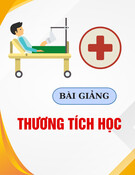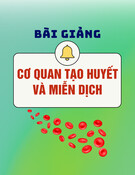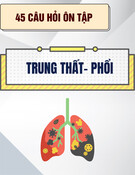
THAI BINH JOURNAL OF MEDICAL AND PHARMACY, VOLUME 16, ISSUE 2 - MARCH 2025
61
INVESTIGATION OF DEFICIENCY AND EXCESS CHARACTERISTICS IN
TRADITIONAL MEDICINE AMONG PATIENTS WITH
MUSCULOSKELETAL DISORDERS
Truong Mai Vinh Thoai1, Nguyen Thi Kim Lien2*,
Vo Lam Bich Ngoc1
1.Traditional medicine student, Hue University of
Medicine and Pharmacy, Hue University
2 Hue University of Medicine and Pharmacy, Hue
University
*Corresponding author: Nguyen Thi Kim Lien
Email: ntklien@huemed-univ.edu.vn
Received date: 15/02/2025
Revised date: 10/03/2025
Accepted date: 15/03/2025
ABSTRACT
Objective: To investigate the clinical
characteristics of Excess and Deficiency patterns
according to Traditional Medicine and explore
associated factors in patients with musculoskeletal
disorders.
Methods: A cross-sectional descriptive study
was conducted on 206 patients diagnosed with
knee osteoarthritis and/or lumbar spondylosis
and/or rheumatoid arthritis and/or periarthritis
humeroscapularis who came for treatment at Hue
Traditional Medicine Hospital.
Results: The prevalence of Excess pattern was
35.9%, Deficiency pattern was 22.3%, combined
Excess and Deficiency pattern was 27.2%, and
neither Excess nor Deficiency was 14.6%. In the
group of symptoms of Excess pattern: 26.7% of
patients had a red tongue, 60.7% had a strong
pulse, and 80.1% experienced constant pain. In
the Deficiency pattern’s symptoms group: 28.2%
had a pale tongue, 46.6% had a deep pulse, and
79.6% experienced migrating pain. The study
found significant associations between the Excess-
Deficiency condition and tongue shape and color,
pulse strength, onset context, pain characteristics
and pain intensity (p<0.05).
Conclusion: The proportion of patients with
Excess syndrome was the highest, neither Excess
nor Deficiency was the lowest. Common symptoms
in the Excess pattern included thick tongue
coating, strong pulse, and constant pain, whereas
the Deficiency group frequently presented with thin
tongue coating, deep pulse, and migrating pain. The
Excess-Deficiency classification was significantly
associated with tongue and pulse characteristics,
localized pain manifestations.
Key words: excess and deficiency, excess
pattern, deficiency pattern, musculoskeletal,
traditional medicine
I. INTRODUCTION
Musculoskeletal disorders (MSDs) are a common
group of conditions that affect mobility and
movement, leading to limitations in daily activities,
reduced work productivity, and, in severe cases,
disability, ultimately diminishing quality of life [1].
Therefore, accurate diagnosis and early treatment
of musculoskeletal diseases play a crucial role in
improving patients’ quality of life.
The disease names are designated based on
the location of the lesion or the characteristics
of each condition. For instance, periarthritis
humeroscapularis refers to shoulder pain
commonly seen in periarthritis of the shoulder;
lumbago denotes low back pain; knee osteoarthritis
describes knee joint pain; and rheumatoid arthritis.
The aforementioned conditions are also frequently
encountered at the Hue Traditional Medicine
Hospital, which serves as the research site for
our study. In Traditional Medicine, the underlying
causes are often attributed to aging, prolonged
illness, or heavy labor, which lead to a deficiency
of the body’s vital energy. This deficiency allows
pathogenic factors such as wind, cold and
dampness to invade the body, disrupting the
circulation of qi and blood. As a result, impaired
nourishment of the musculoskeletal system leads
to symptoms such as swelling, pain, numbness,
and joint heaviness [2].
According to Traditional Medicine, deficiency
and excess are two fundamental principles in
Eight-Principle Pattern Identification. In the context
of disease differentiation, deficiency refers to
a state in which the body’s vital essence is lost,
implying depletion or inability to maintain internal
balance, resulting in weakened Upright qi. In
contrast, excess occurs when pathogenic factors
become predominant, invading the body from the
outside and causing disease manifestations [3]. In
reality, human constitution, pathogenic factors and
disease progression often interact in a complex






























